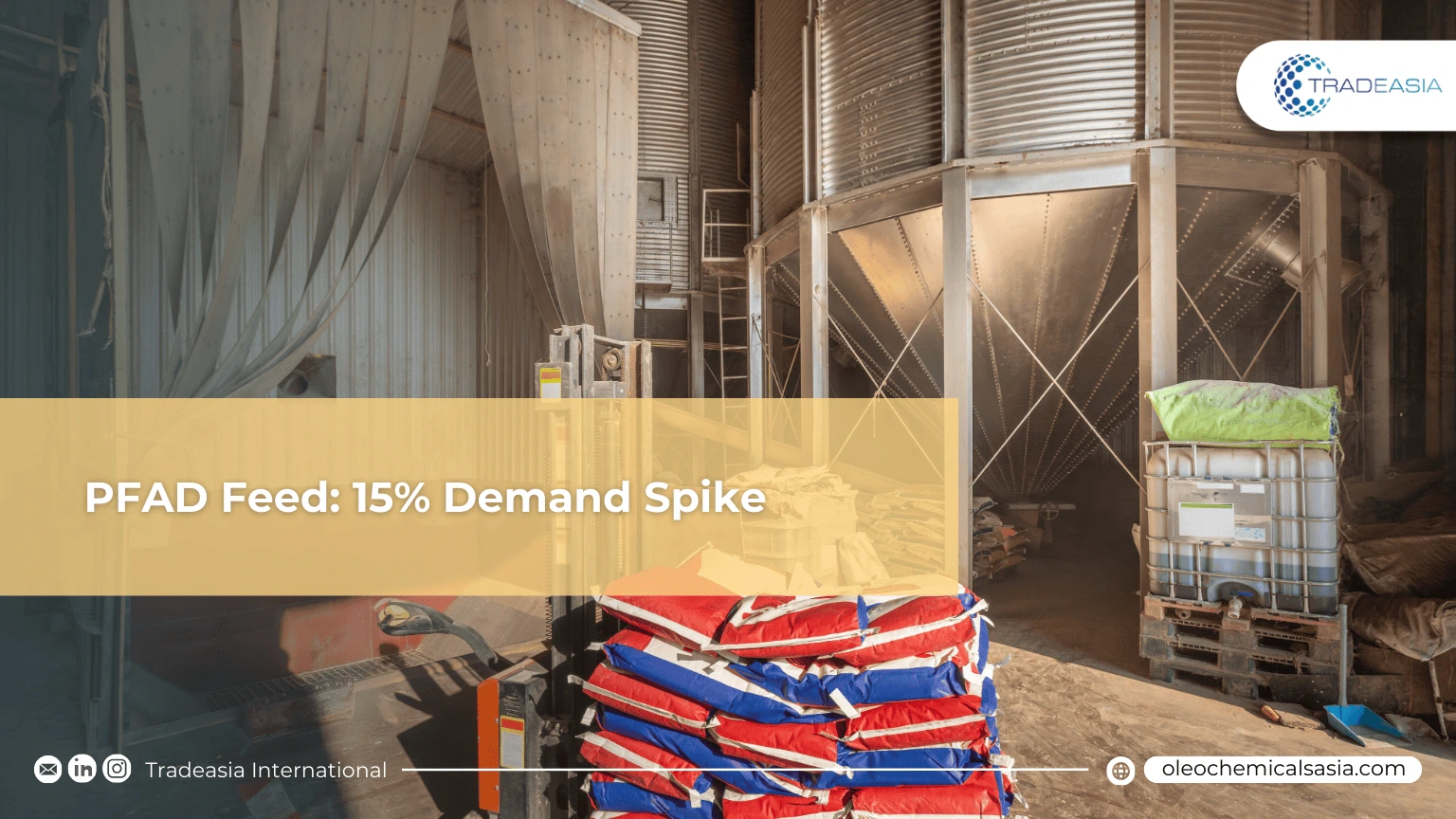PFAD in Feed: Why a 15% Demand Spike Cements Its Status as the Premier Energy Source

Table of Content
- The Unbeatable Economics Driving the Switch
- Navigating the Supply Chain for Future Growth
The global animal nutrition landscape is experiencing a seismic shift, with Palm Fatty Acid Distillate (PFAD) emerging as the undisputed leader in high-energy feed. In a clear signal of market transformation, the third quarter of 2025 has seen PFAD demand soar to a record 2.5 million metric tons. This isn't just a minor fluctuation; it's a 15% year-over-year increase, cementing PFAD's position as the most strategic energy source for livestock producers aiming for peak efficiency and profitability.
For businesses looking to capitalize on this trend, aligning with a strategic sourcing partner is no longer an option but a necessity. At Tradeasia International, we have seen firsthand how proactive procurement of high-quality oleochemicals like PFAD can insulate companies from market volatility and unlock new performance benchmarks.
The Unbeatable Economics Driving the Switch
The core reason for this industry-wide pivot is compelling economics. With traditional feedstocks like corn and soy experiencing price hikes of up to 18% since May, PFAD presents an undeniable value proposition. Currently trading at approximately $750 per metric ton, it delivers a metabolizable energy value that is 20-25% more cost-effective than competing fats. This advantage isn't just theoretical; it translates directly into tangible profits. Industry data confirms that incorporating a mere 4% of PFAD into broiler feed rations can improve the Feed Conversion Ratio (FCR) by a remarkable 8%, a critical gain for any large-scale operation.
Navigating the Supply Chain for Future Growth
This booming demand is reshaping global trade, with suppliers in Indonesia and Malaysia now exporting over 800,000 metric tons of PFAD monthly for feed applications alone. Navigating this dynamic landscape requires foresight. As a key facilitator in the global palm trade, we often advise clients that “securing tomorrow’s supply at today’s stability is the cornerstone of profitability in the commodities market.” With analysts forecasting a potential 5-7% price increase by November 2025, the message is clear. The time to secure Q4 and Q1 2026 contracts is now, ensuring a stable supply of this indispensable ingredient to fuel future growth.
Sources:
- Market Analysis: Feedstock Price Volatility in H2 2025, Oleochemicals Asia
- Global Agri-Commodities Outlook, S&P Global, September 2025
- Q3 2025 Feed Consumption Report, International Feed Industry Association

Leave a Comment